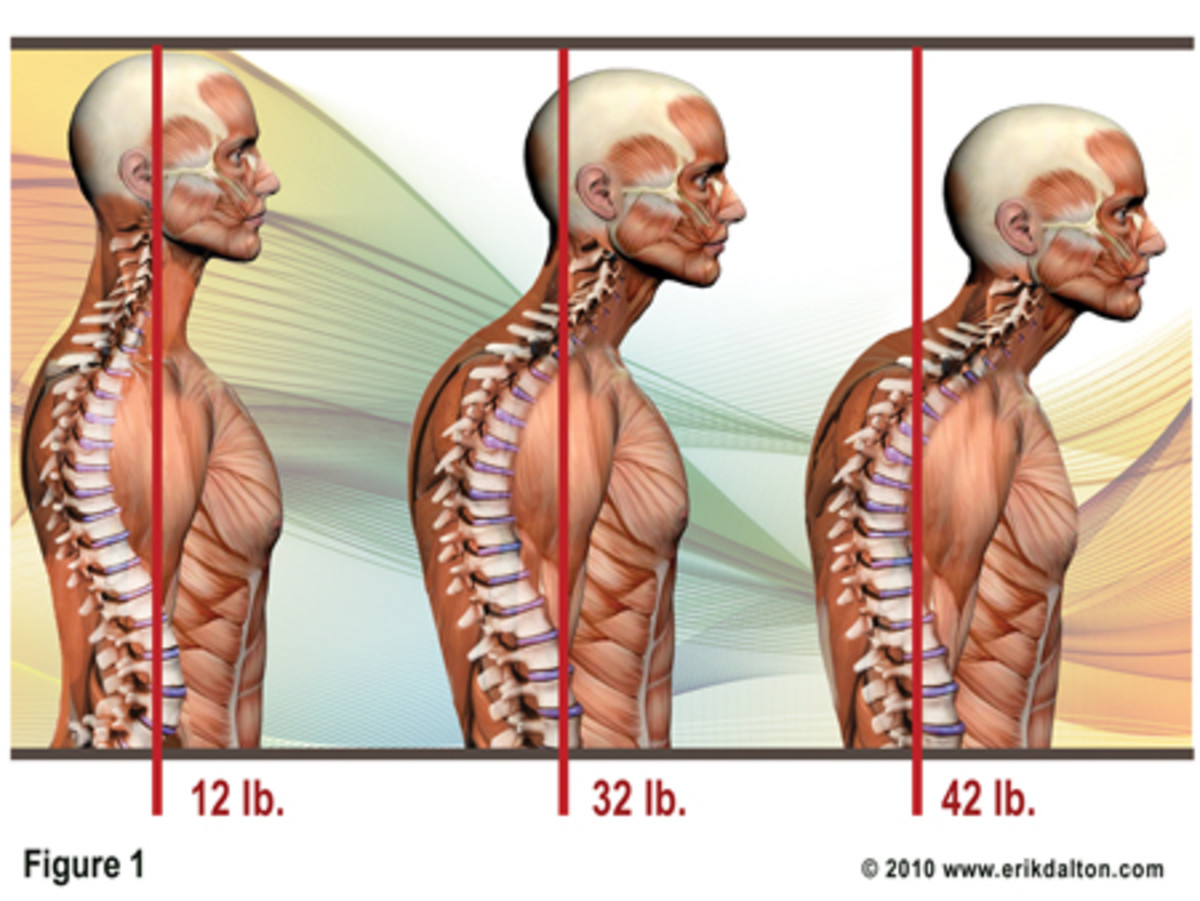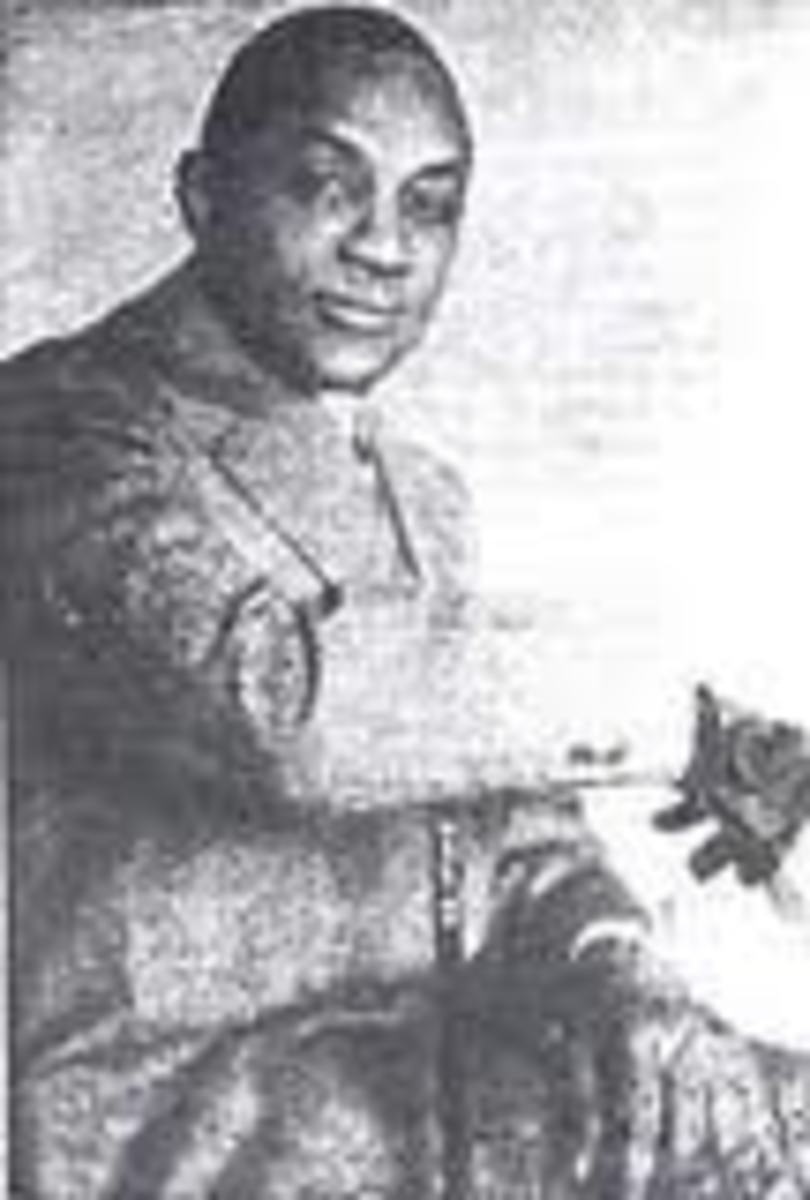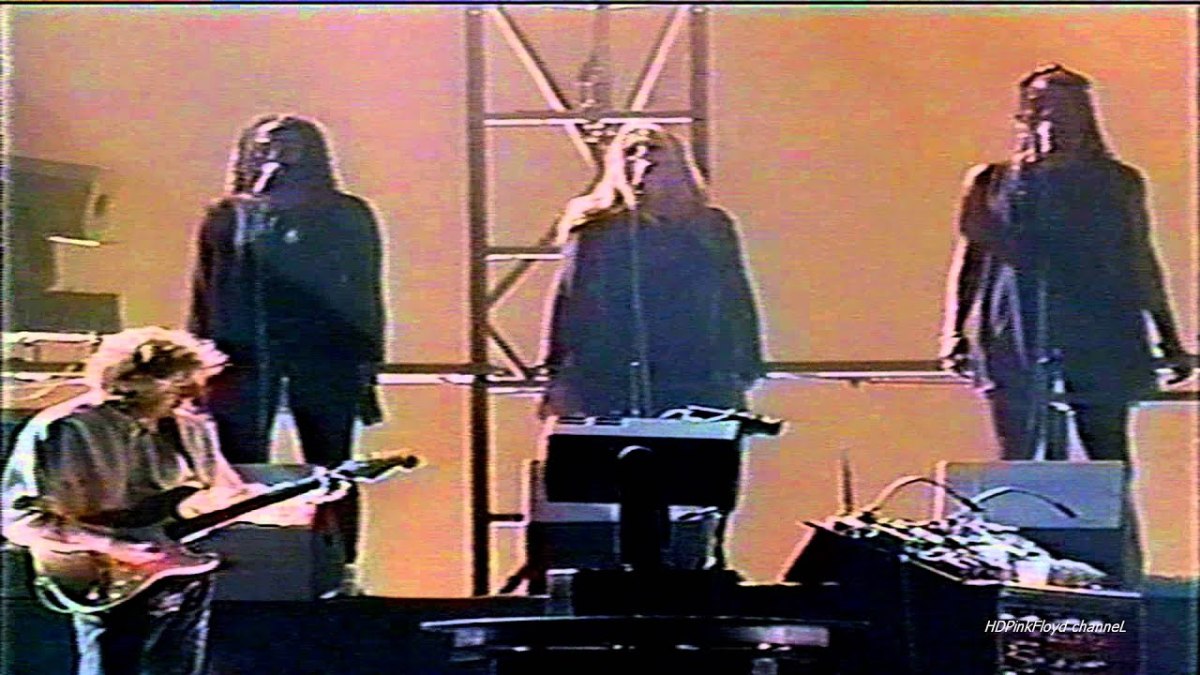Top 5 Badminton Rackets for Hard Smashers 2018
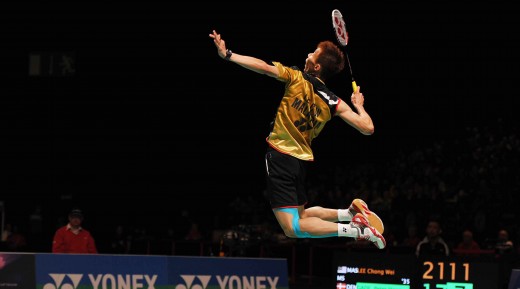
Getting a smash off in Badminton is one the best pleasures in life. Hearing that BOOM when you hit the sweet spot and seeing the shuttle towering down is SO addicting. There's a reason why this one technique remains a favorite amongst players of all skill levels!
What Type of Racket is Best for Smashing?
Before I give my recommendations, we have to assume just a few things!
- You are using proper technique - You will hurt yourself if you're smashing with poor technique, especially with stiff rackets!
- You are intermediate player or higher - Most new players won't be able to feel much of a difference between low and high end rackets
Brand:
If we are focusing just on smashing, there won't be much of a different between the major badminton brands (Yonex, Victor, Li-Ning).
Weight:
If you've ever studied Physics, you will remember Newton's Second Law of Motion, the equation F=ma, where F is the amount of force, m is mass and a is acceleration. This basically means in order to get a stronger smash, we can either swing faster or we can use more weight on the racket. But because we will eventually reach a physical limit on how fast we can swing, the only way to increase our smash would be to use more weight. I know, I know, there's a lot more nuances when talking about swing speed vs weight. But for most players, using a 3U will generally provide a stronger smash.
Different manufacturers have different weight rating system, the most popular of which is Yonex's U system:
U = 95-100g
2U = 90-94g
3U = 85-89g
4U = 80-84g
Balance Point:
Continuing on from our discussion on weight, to get a powerful smash, the position of the weight is highly important. The contact point of the shuttle will be at the head of the racket, therefore we will be looking for a head heavy racket. On the contrary, an even or head light racket will be more maneuverable and quicker around the net.
Flexibility:
The general knowledge that gets passed around is that flexible rackets have more power and less control, and stiffer rackets have less power and more control. While this works as a general rule of thumb, it is not quite correct.
Let's talk a bit more about Physics. When you are smashing, you are exerting force to your racket, bending the racket back and unleashing potential energy (think of bows and springs). So in order to get more return, you would need to bend it more right? Yes, that's correct but you would eventually reach a physical limit on how much a racket can be bent. When that limit is reached, the only thing you can improve on is control. Thus, as you improve you would need to opt for a stiffer racket to get more out of it. There's a reason why all professional players use stiff rackets. I also want to note that flexible rackets may give you stronger smash, but you aren't getting better smashes. There's no point getting a 400km/hr smash if its going out half the time! So a player with good technique should be able to wield a medium flex or higher racket.
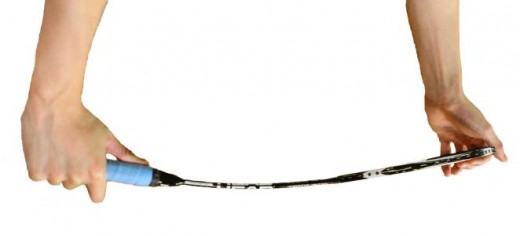
The more explosive swing player will benefit more from stiffer shaft in terms of control and power. The more slower swing player will benefit more from a flexible shaft.
Grip Size:
This is a personal preference for most and doesn't have too much of an impact on performance. Some find a thicker grip will give more power, and a thinner grip will grant more control. I personally prefer a thinner grip as it gives me more control and provides quicker grip rotations.
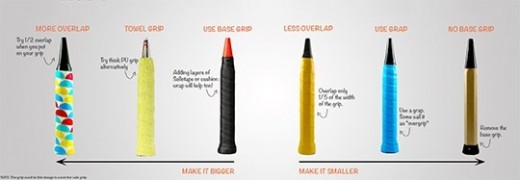
In the Yonex racket range, the sign G is used to indicate the size of the racket handle. G3, G4 and G5 are the common sizes for racket handle.
G3 means a larger racket handle whereas G5 is the smallest racket handle.
Yonex Z-Force II
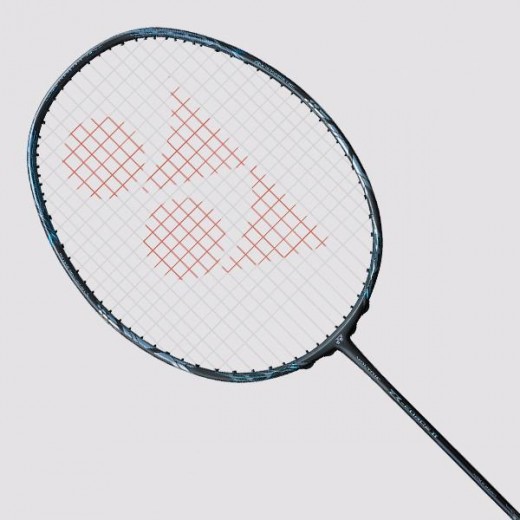
Pros
| Cons
|
|---|---|
Great smashing power with a solid "punching" feel
| A bit slow with fast drives and attacks
|
Excellent overhead shots
| Sweet spot takes time to get used to
|
Very stable
| Defence is a bit slow
|
Extreme head heavy makes the extra stiff staff easier to use
|
Unlike previous releases from Yonex, the Z Force 2 is a noticeably plain black racket with few blue decals. It's a good looking racket and a welcome return for many from "Flashy" graphics and colours.
ZF2 is a head heavy racket with a number of distinguishing features. The thinner shaft is noticeable and this combined with the new aerodynamic head work really well together although be aware that this racket has a unique feel because of it.
The sweet spot feels a little higher most rackets and this really helps when adjusting to the racket. Please do not be fooled that this racket will transform your smash - it won't. If you have poor technique or require more flex in a racket then this racket is not going to transform what you already have.
The Z Force 2 is so much more maneuverable allowing a player to get their racket into place faster to return the shuttle. There are no issues to report around the net although good preparation is a must with any head heavy racket.
Yonex Duora Z-Strike
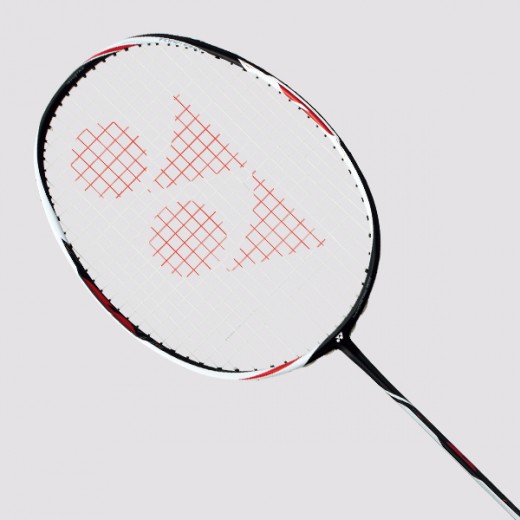
Pros
| Cons
|
|---|---|
Excellent control - feels like an extension of your arm
| Hard to use due to combination of extra stiff and shorter shaft
|
Extremely stable
| Smaller frame takes time to get used to
|
Great maneuverability with drives, defence and attacks
|
Given the lack of racket makers now, the speed at which new rackets and innovations are pushed out are sorely lacking compared to back in the days when guys like Hart, Toalson and Prince were in the game.
The Yonex Duora 10 proved to be a little of a disappointment, with my preferring the backhand side of the racket for regular play. If any of you were old enough to have used the Yonex Armortec 900 Power you will find a striking similarity in this racket.
For me the racket was an improvement over the Duora 10, offering several boosts to the head frame construction. The extended attacking capability of the Yonex Duora Z-Strike is a very good improvement over the more dainty Duora 10.
While heavy racket rackets offer a more stable frame that contributes to better control, I experience a very peculiar phenomenon when swinging with the Z-Strike, particularly on the long clears.
We've not had a white racket for awhile, and the fresh combination of white, black and streaks of orange and red make the Yonex Duora Z-Strike a nice racket to look at.
Yonex Astrox 88D
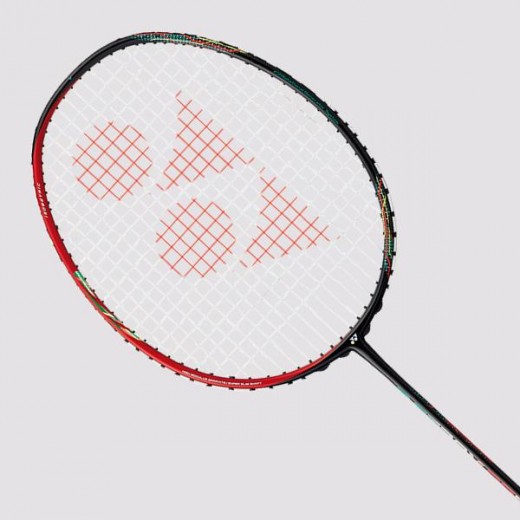
Pros
| Cons
|
|---|---|
I am someone who uses a slightly longer and less compact swing especially when given time to strike a bird after a lift, so the slightly more flexible shaft of the 88D is extremely nice as opposed to the 'punch power', extra stiff Z-Force II. What's more impressive in my opinion about the Astrox 88D is how little is sacrificed when it comes to speed and handling of the racket.
Yonex marketed the racket as a heavy power hitting racket, and when making the racket, they did a good job of really focusing on the needs of doubles play.Though the racket is definitely head heavy, it still feels lighter than that of the Z-Force II and the Voltric 80 largely because of its counterweight at the bottom of the handle, and defense feels much better than that of the Z-Force series.
I'm almost positive that this racket will end up being more popular than the 88S series, and I'm almost pretty sure that this is going to be one of Yonex's most popular rackets on the market. Between its ease of use, its forgiving nature at producing power, and its still good handing when playing fast exchanges, the Astrox 88D is fantastic.
Victor Thruster K 9900
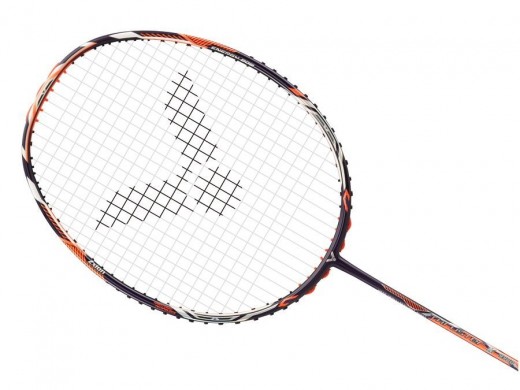
Pros
| Cons
|
|---|---|
After a few clears it is evident this is a completely different feel compared to previous versions.We now have a powerful and yet incredibly friendly racket that flows beautifully and hits so nice.
Whilst I'm not a huge fan of the compact head as it has that "Tight" feeling on impact, TK9900 plays so nice and I could easily be converted.There is a great, solid feeling on impact with the shuttle without an noticeable lag in the head from the weight.
It's nice to be able to open up with this racket without feeling restricted at all by a weighty beast that can only be wielded for short periods of time. I felt as though I could hit all day with Thruster K 9900, and that's a huge compliment for this type of frame.
Even one or two off-centre shots stayed on course which really pleased me. Flat drives and pushes were a lot more comfortable compared to other head heavy rackets with similar specs that I have tried.
Li-Ning N9II
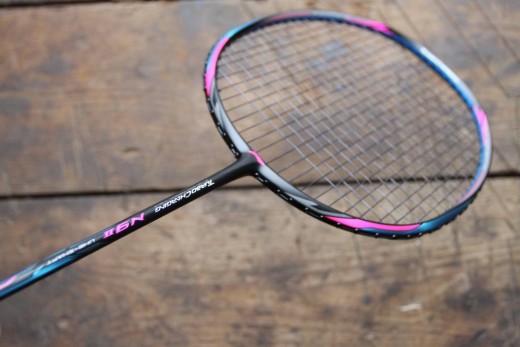
Pros
| Cons
|
|---|---|
Whenever you pick up a Li-Ning racket, there's always a nice feel to it, irrespective of the specification. With N9II being an even balance racket, I could almost predict how the racket would feel.
Less weight in the head means the racket can be called upon to execute faster, therefore presenting a quicker, snappier alternative in the shot execution. Generally, an even balance racket won't hit as hard as a heavier headed racket, although this depends on the ability of the player to generate racket head speed.
N9II performed very well in the smash department although didn't quite hit the speeds achieved with Li-Ning N99. That said, an even balance racket doesn't profess to be the best at everything, it is extremely good in all areas. N9II certainly fits into that category which makes it an excellent doubles racket.
There's a confidence with this racket that you could time these shots well all day without the onset of early fatigue.


